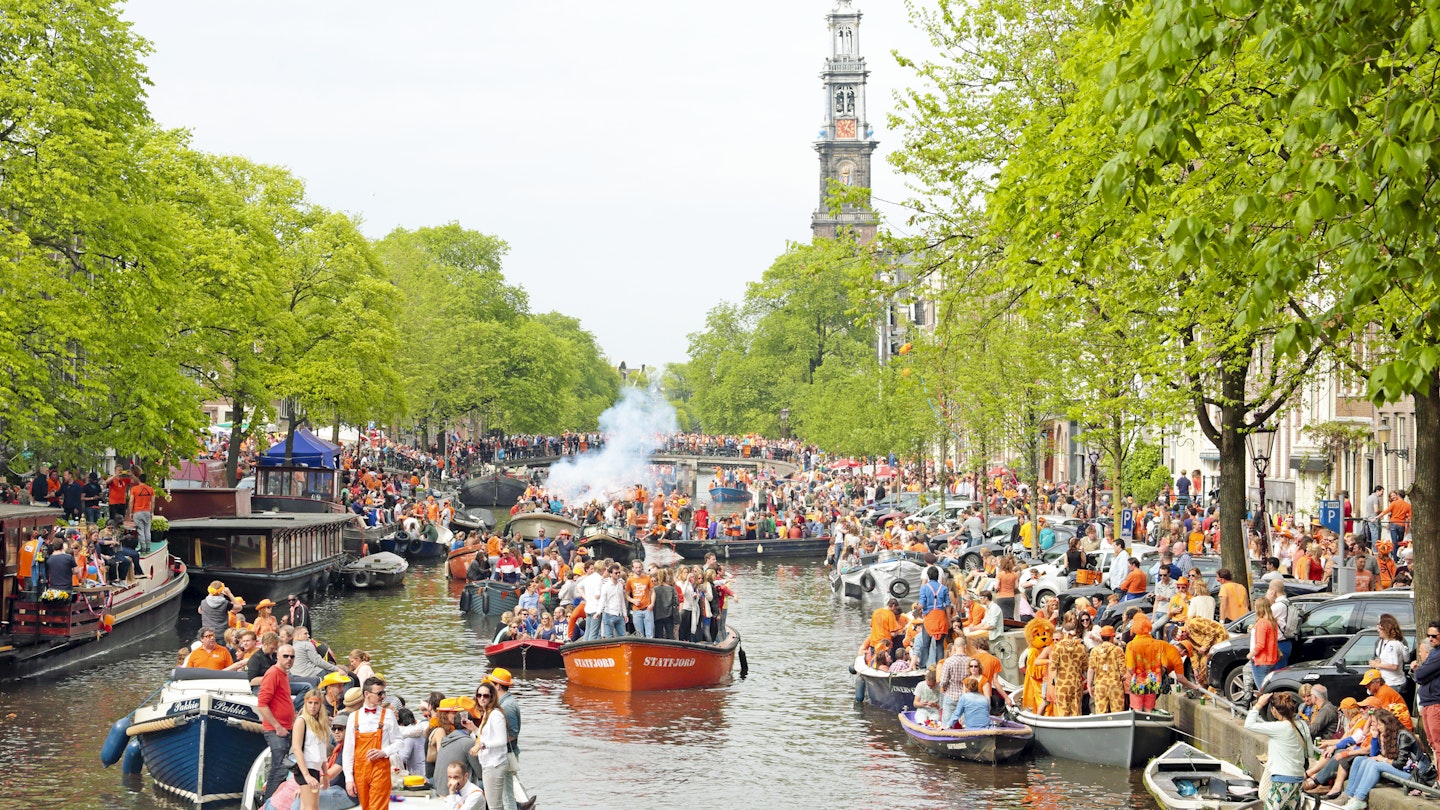In many ways, the Netherlands is a year-round destination, with each season offering its own unique charm. Spring sees fields full of tulips in bloom, while summer invites you to enjoy long days at sandy beaches along the coast and on the Wadden Sea islands. As autumn transitions to winter, the darkening chill invites you to embrace the Dutch quality of gezelligheid (conviviality, coziness) at atmospheric cafes. Cycling is a Dutch way of life, with festivals enriching the calendar throughout the year.
When deciding which time of year to visit, you’ll also want to consider your budget, the crowds, and the Netherlands’ notoriously fickle weather. Here’s everything you need to know to plan your perfect trip.
June to August: Enjoy Long Days and Warm Weather
Summer marks the high season in the Netherlands. Temperatures peak during this time, with average maximum temperatures of 19°C (66°F) in June and 21°C (70°F) in July and August. This is the perfect time for countryside cycling and scenic canal cruises. Cafes spill out onto lively terraces, with everything from small, hidden museums to vibrant beach bars buzzing with activity.
During summer festivals, more than 40 stages and 1200 performances come to life across the country, making urban streets feel like a gigantic party. Notably, summer in Amsterdam is vibrant, with the city remaining lively thanks to its temperate climate.
However, this is also the busiest and priciest time to visit, necessitating planning ahead. It is crucial to secure accommodation, museum entries, guided tours, and popular restaurants well in advance. Consider quieter locales as your base to enhance convenience, as the Netherlands’ compact size and efficient transport greatly expand your options.
September and October: Experience Rich Culture
The post-summer months of September and October represent a beautiful shoulder season. The weather can be glorious, with average maximum temperatures of 18°C (64°F) in September and 14°C (57°F) in October. Autumn leaves begin to fall, revealing the architectural details of gabled canal houses, making this an ideal time for photography.
This season marks the beginning of the cultural calendar, with a wealth of options, including ballet, opera, and contemporary dance performances across various venues. Popular festivals, such as the Rotterdam’s Wereldhavendagen (World Port Days) and Amsterdam’s renowned electronic music festival, are also a highlight.
As the crowds start to thin out, accommodations become easier to secure at shorter notice, and prices gradually decrease. Remember that Daylight Saving Time concludes on the last Sunday of October, which also affects daylight hours.
November to February: Best for Budget Travelers
With the arrival of November, low-season prices become more widely available, with exceptions for special events and holidays. Some attractions, restaurants, and hotels may reduce their hours or close for the season.
Temperatures average a maximum of 10°C (50°F), and January can bring even colder days at just 6°C (43°F). Rain is frequent, and snow can occur, making warm clothing essential. Ice-skating becomes a cherished pastime as lakes and canals freeze over during colder years.
The elongated dark days and nights bring life to the Netherlands’ candlelit bruin cafés (brown cafes). You can also enjoy the dramatic illuminations of festivals such as GLOW Eindhoven and the Amsterdam Light Festival, best experienced from a heated canal boat.
For families, the arrival of Sinterklaas by boat creates a festive atmosphere, with December 5 marking the exchange of gifts. In the Catholic provinces of the south, the lead-up to Shrove Tuesday highlights extravagant Carnaval celebrations, particularly famous in Maastricht.
March to May: The Best Time for Tulip Lovers
If the Netherlands’ national flower is high on your agenda, scheduling your visit from mid-March to mid-May is essential to witness the breathtaking bloom. The region known as Bollenstreek (Bulb Region) showcases colorful tulips, creating stunning landscapes.
The lively Bloemencorso (Flower Parade) takes place in mid-April, travelling through the region while providing insights into how elaborate flower floats are crafted. Nonetheless, do keep in mind that nature determines the timing, so the blossoms may bloom earlier or later than expected.
April features King’s Day (Koningsdag) celebrations on the 27th, where the nation revels in orange attire, honoring the royal House of Orange. The largest events occur in Amsterdam, drawing considerable crowds. This high demand means accommodations can become limited, so early reservations are advisable.
Spring weather can be brisk, averaging a maximum of 10°C (50°F) in March, 13°C in April (55°F), and 17°C in May (62°F). Therefore, layering is necessary to stay comfortable while enjoying the outdoors. As spring progresses, daylight hours increase significantly, especially with the transition into Daylight Saving Time at the end of March.




